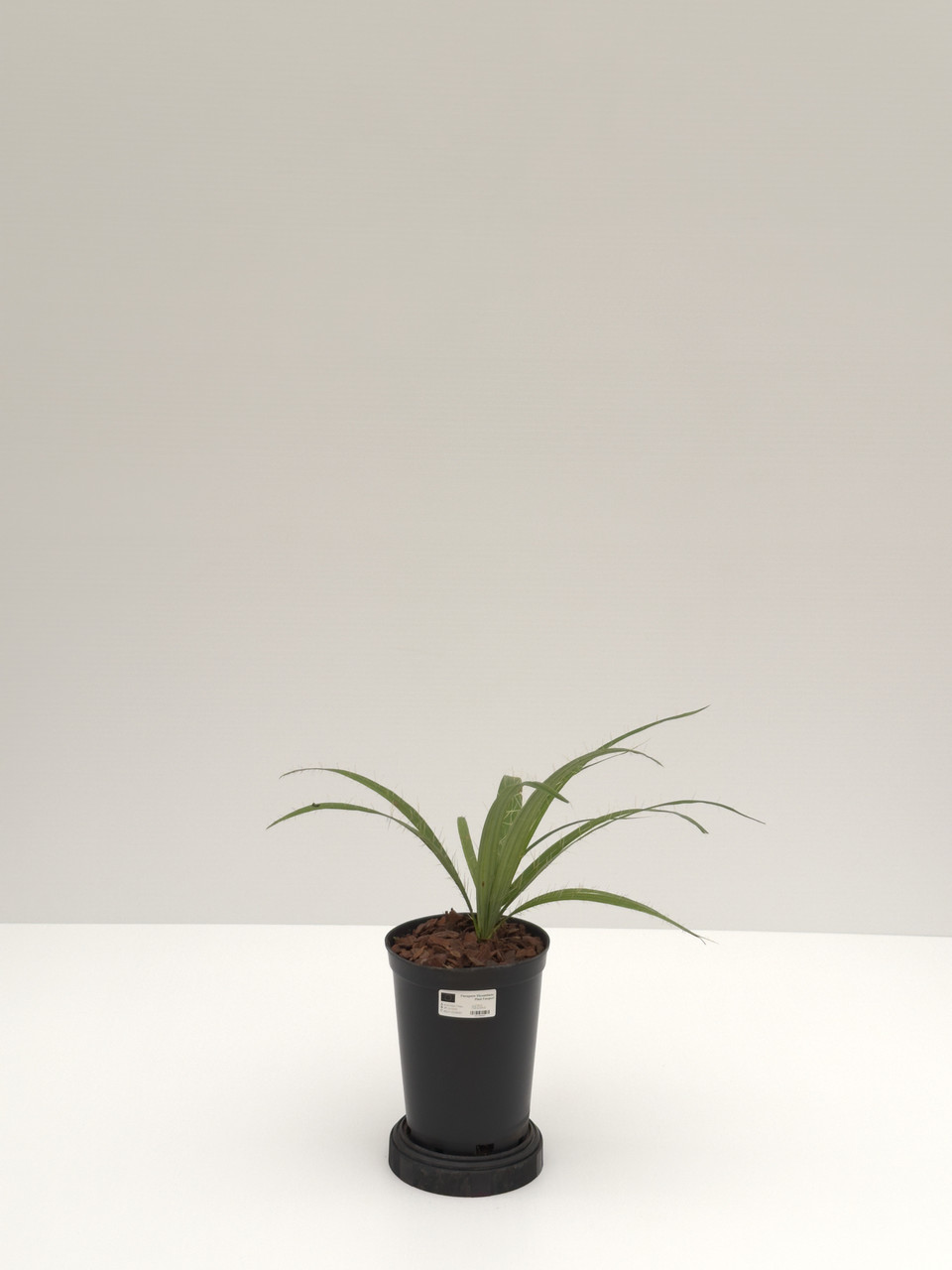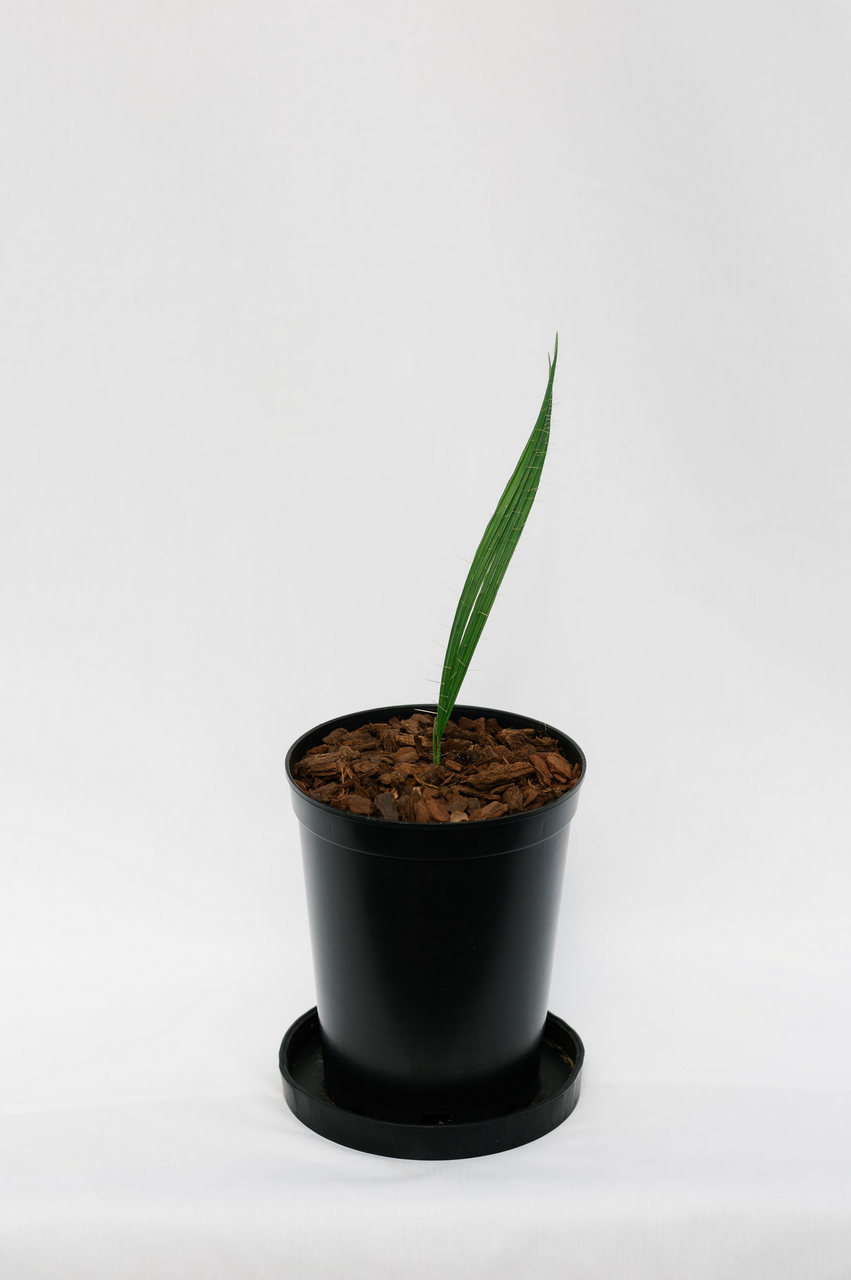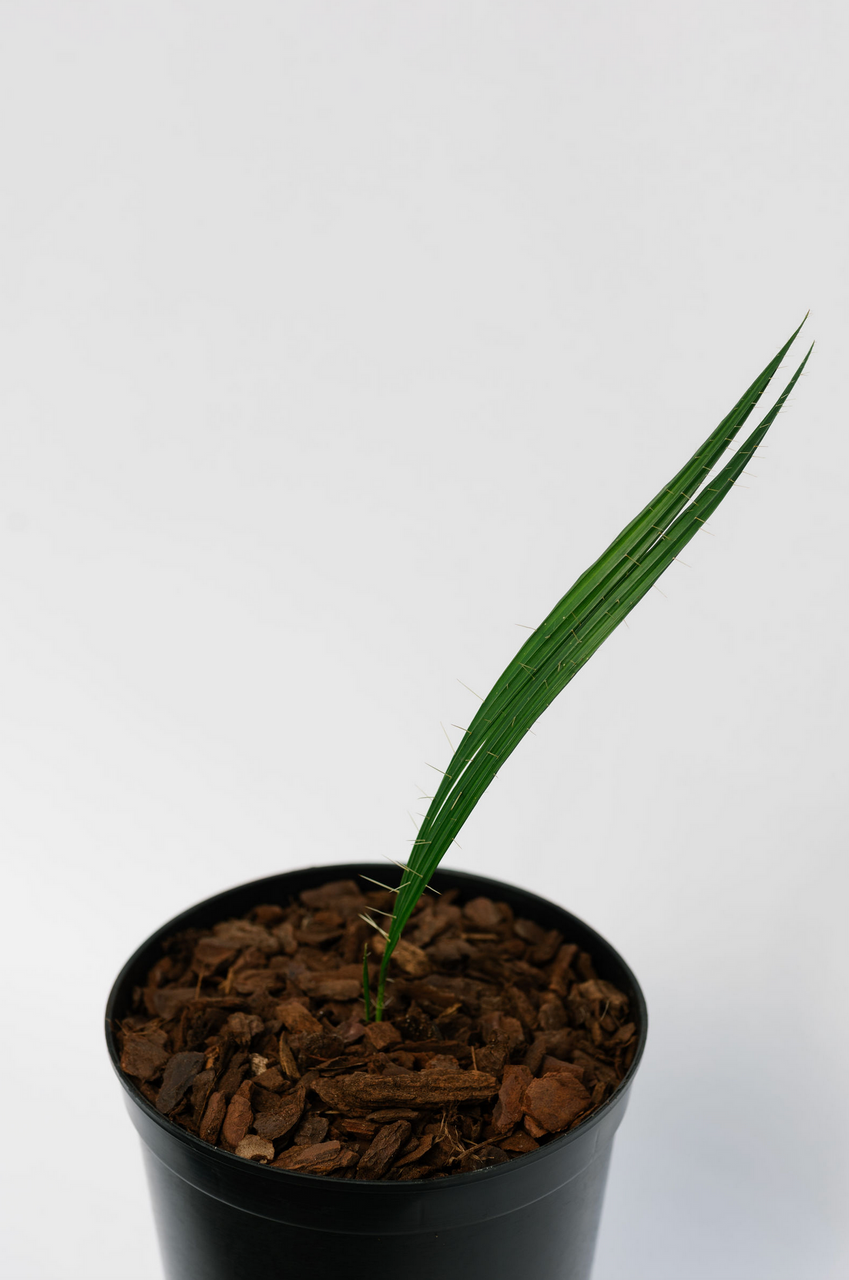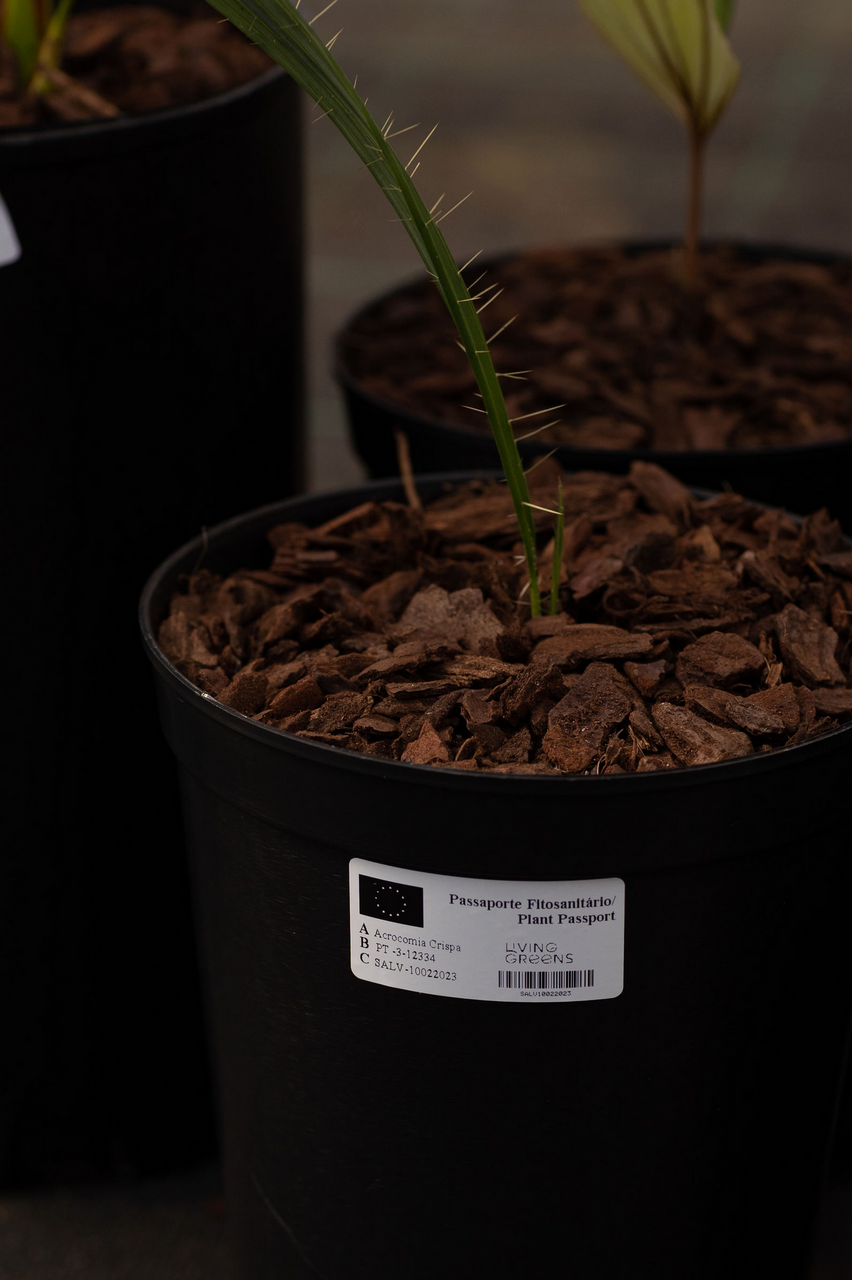Product Description
Habitat and Distribution
Acrocomia crispa is endemic to Cuba, distributed all over the island, where it is found in open forests on calcareous limestone soils. Formerly placed in its own genus, Gastrococos, recent work found that that genus was nested within Acrocomia.
Description
Up to 12 m. tall, and 30 cm. in diam., a spiny palm, with a trunk that is slender at the base, but swollen in the middle, giving it the name "Cuban belly palm", spines fall from trunk when mature. Crown has a spread of up to 5 m., pinnate arching leaves, up to 2.5 m. long, dark green on top, pale blue-green on the underside, pinnae, and rachis covered with spines, thorny inflorescence, monoecious, fruit is globose, orange-yellow, about 2.5 cm. in diameter. Editing by edric.
Culture
Sunny, well drained position, but with plenty of water. Very slow growing when young, however fairly rapid past the juvenile stage, and speed up considerably when they start to trunk. Seeds difficult to germinate, up to one year. Hardiness: USDA zones, 9B-11.
Comments and Curiosities
This is a tillering palm, it exhibits saxophone style root growth (it has a heel), keep top third of heel above soil elevation!.
Formerly known as Gastrocococ crispa.
A beautiful and bizarre palm from Cuba with a dense crown of spreading leaves with elegantly drooping, shiny, narrow leaflets, and a robust trunk that is grotesquely swollen in the middle. It is certainly a palm for those who like a challenge: its seeds take a long time to germinate, the seedlings are really slow for the first few years, and when it finally goes WHOOMPH (and it does, the trunk grows unbelievably fast!), you discover it is heavily armored in vicious spines from head to toe. Personally, we think it is well worth the trouble; there definitely is no other palm quite like it. {RPS.com)















